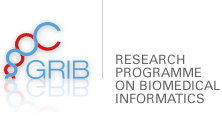
Decoded The Genome Of The Rat
By the end of march, an international team of scientists presented the genome of the rat, an advance that in the short term will help to understand better how the human body works and in the long term will help to improve the treatment of a great number of illnesses. Two Spanish research groups have participated in the investigation, the Research Group on Genome Bioinformatics of the Research Unit on Biomedical Informatics of the Institut Municipal d´ Investigació Mèdica of Barcelona (IMIM) and another research group of the University of Oviedo.
The genome of the rat, as it happened with the human genome when it was presented in 2001, will not offer immediate medical benefits, pointed out the Dr. Roderic Guigó, head of the IMIM group participating in the research. According to the results presented in the scientific magazine “Nature”, the human genome is closer to the rat genome than to the mouse genome. The comparison of the three sequences reveals that 90% of the genes of the rat have a correspondence, more or less evident, with the human genes. In addition, almost all the associated human genes with diseases discovered until now exist also in the rat.
The IMIM has contributed with a data processing program that seeks the genes in the great world of the genome. Of the 2.750 million letters that form the genetic code of the rat, “the genes only represent among the 1% and the 2%”, explained Josep Francesc Abril, coauthor of the investigation together with Roderic Guigó, Mar Albà and Francisco Cámara.
What this program does is to scan all the rat genome in search of patterns of letters that disclose the presence of genes. These patrons of letters act like switches that set in motion the machinery of the genes to produce proteins. It is possible to detect them because the switches are similar from one gene to another. “To find the genes is a prior step to be able to investigate how they act in a healthy organism and how, in some cases, cause illnesses,” explained Guigó.


